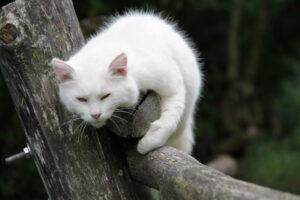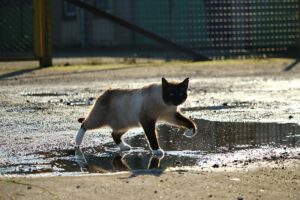How Long Can A Cat Go Without Water ?
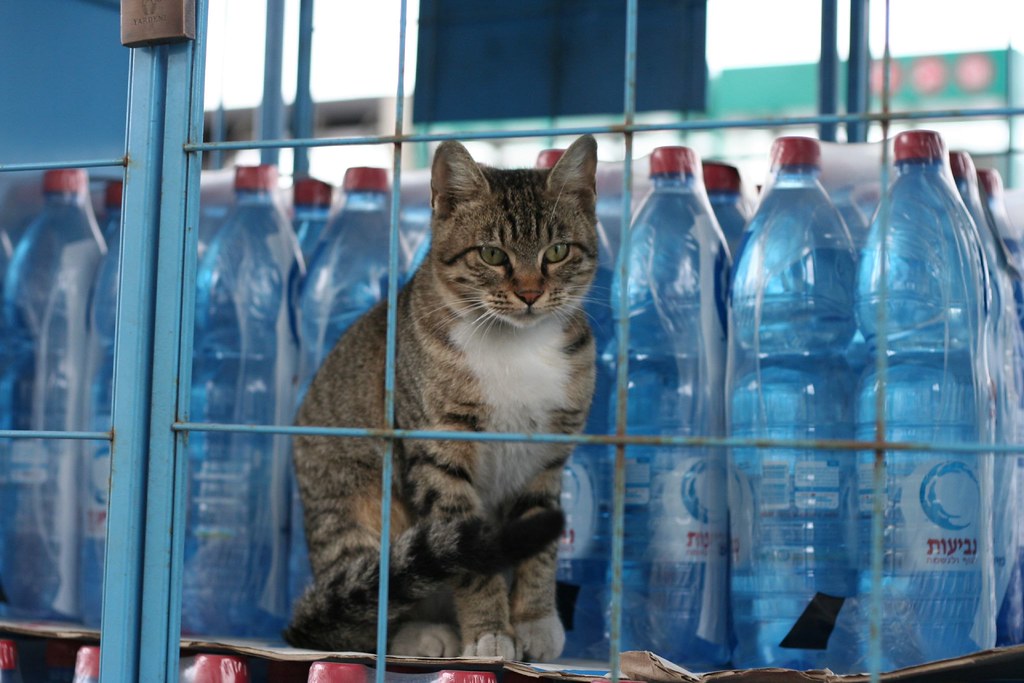
How Long Can A Cat Go Without Water :- In a theoretical scenario, cats could potentially endure 1 or 2 weeks without food, provided they have access to water. However, any duration surpassing 24 hours is a cause for concern. Prolonged lack of nutrition weakens cats significantly, and after just 2-7 days without food, they face a substantial risk of hepatic lipidosis, a severe liver condition.
It’s crucial to seek veterinary attention urgently if your cat abstains from eating entirely or consumes significantly less than usual for over 24 hours. While an occasional day of fasting is unlikely to harm them, early intervention enhances the likelihood of success and significantly reduces the chances of your cat requiring more intensive treatment. A cat’s refusal to eat could also signal a potentially severe health problem.
If your cat exhibits extreme lethargy, repeated vomiting, or other worrisome symptoms, it’s often best to seek veterinary attention as soon as possible rather than waiting beyond the 24-hour mark. This proactive approach ensures prompt assessment and appropriate care for your feline companion.

How Much Water Do Cats Need?
Anthony emphasizes that measuring water intake precisely for the majority of healthy cats may not be necessary, but veterinarians generally suggest a formula. “The normal water intake for a cat is highly individually variable, but ranges from 40–60 milliliters [approximately ¼ cup] per kilogram of body weight per day have been purported as ‘normal’—though 20–70 milliliters per kilogram per day might be normal,” she says.
In practical terms, for a cat weighing around 5 kilograms (11 pounds), the suggested water intake would be about 250 milliliters daily, roughly equivalent to one cup. The key is understanding your cat’s typical habits and patterns, enabling you to alert your vet if there are notable changes in water consumption, whether an increase or decrease.
Reasons Why Your Cat Isn’t Drinking Water
It’s not unusual for cat owners to pay less attention to their cat’s water consumption compared to their food intake. After all, when a cat is running low on food, their vocal protests are hard to miss. However, if you do observe your cat avoiding the water bowl, it becomes crucial to identify the underlying reasons promptly.
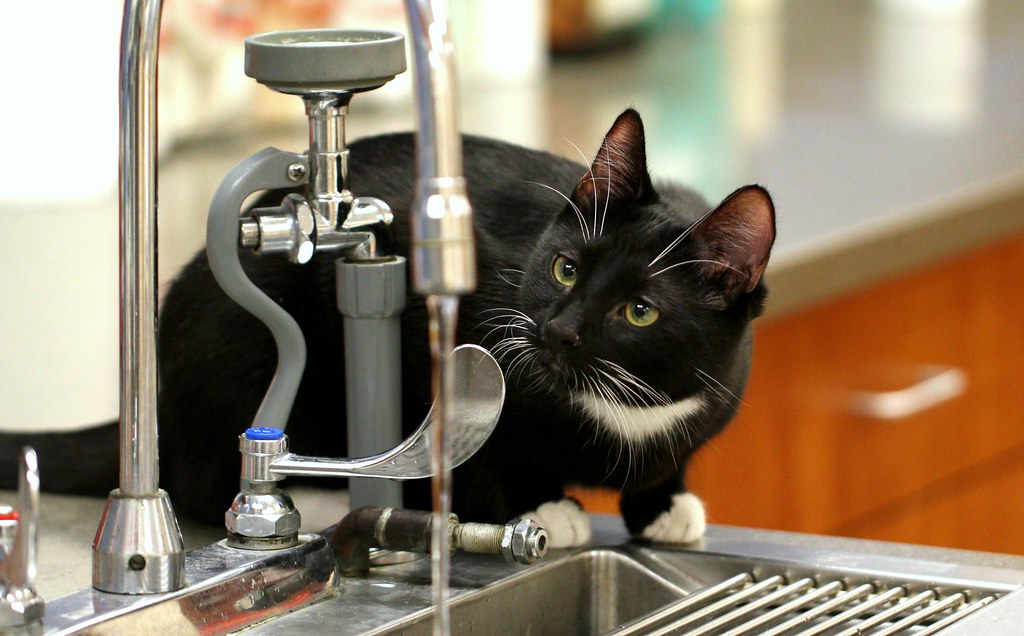
Here are some common explanations for a cat willingly avoiding hydration:
1. Exterior Stress: – If you’re away on vacation and the pet sitter notes that your cat isn’t drinking water, it may be due to the stress of your absence. Like humans, cats can feel overwhelmed, and some self-care avoidance during such times is not uncommon.
2. Hygiene Concerns: – Cats are known for their cleanliness, and an unclean water bowl may deter them from drinking. If the bowl has not been cleaned regularly, any floating debris could be a turn-off for your cat.
3. Dry Food Diet: -Cats on an all-dry diet might naturally drink less water. It may sound peculiar, but this is a known behavior.
4. Pain or Medical Issues: Unfortunately, cats may avoid drinking if it causes them pain. If other explanations are ruled out, or if your cat shows signs of dehydration, seeking immediate veterinary attention is essential.
Understanding and addressing the specific reason behind your cat’s aversion to water ensures their overall well-being and hydration.
What To Do If Your Cat Isn’t Drinking Water
Enhancing your kitty’s hydration can be achieved with a few additional strategies. Consider trying one or more of these tips:

1. Opt for Canned Food:– Canned food, containing about 70–80 percent water, can be sufficient for a healthy cat, especially if there are no underlying health issues.
2. Mix Warm Water:– Adding warm water to canned food can not only make it more appealing but also contribute to your cat’s overall water intake.
3. Stimulate Curiosity:– Spark your cat’s interest by dropping an ice cube or two into the water. Alternatively, you can add a few drops of canned tuna juice or low-sodium chicken broth to entice them.
4. Use a Pet Water Fountain:- Consider setting up a pet water fountain, ensuring regular cleaning to prevent the buildup of mildew and mold, even with a filter.
5. Maintain Clean Bowls:- Wash water bowls frequently and, if needed, decalcify them to eliminate water deposits that might discourage your cat from drinking.
Experimenting with these suggestions can not only make hydration more appealing but also contribute to your cat’s overall well-being.
Signs A Cat is Dehydrated
When you observe that your cat has been drinking less, it’s crucial to be aware of the signs of dehydration. Early recognition of this issue increases the likelihood of resolving the problem. Left untreated, dehydration has the potential to harm a cat severely, sometimes even leading to fatal consequences. To prevent this, pay attention to the following symptoms:
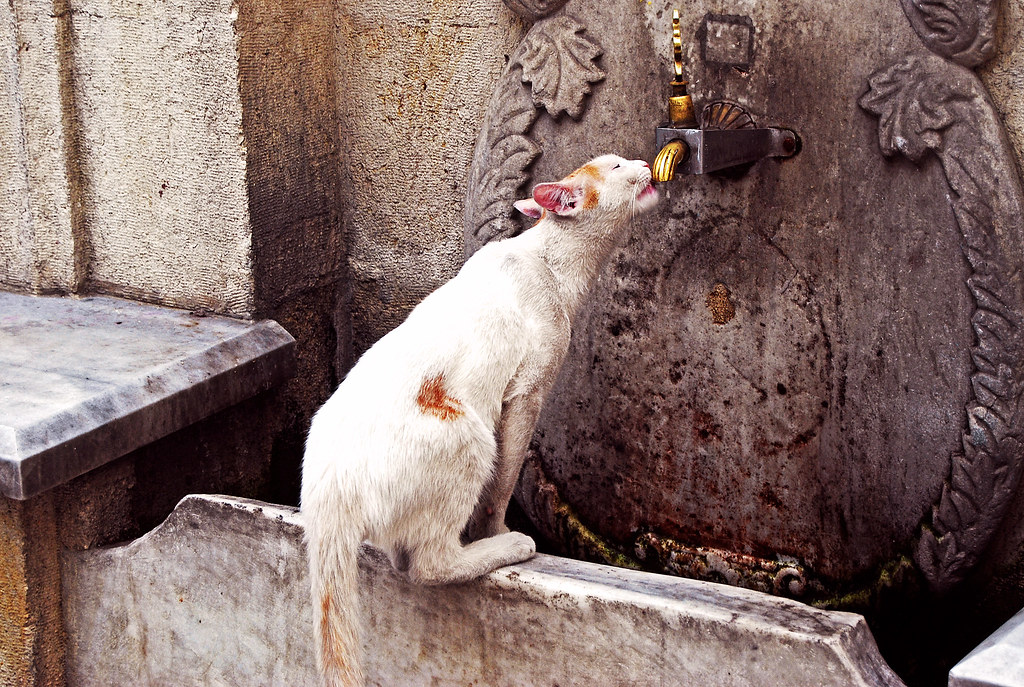
1. Reduced Skin Elasticity:– Assess the elasticity of your cat’s skin by gently pulling some skin on their shoulder. If it snaps back immediately, your cat is likely fine. Delayed return suggests low elasticity, indicating potential dehydration.
2. Pale Tongue:– A pale color in your cat’s tongue and gums can signify a medical issue, possibly dehydration, though it might also indicate another illness.
3. Sunken Eyes:– Sunken and sickly-looking eyes are among the most evident signs of dehydration in a cat.
When in doubt, err on the side of caution. Utilize the tips below to boost the water intake of a cat you suspect may be suffering from dehydration, ensuring their overall health and well-being.

